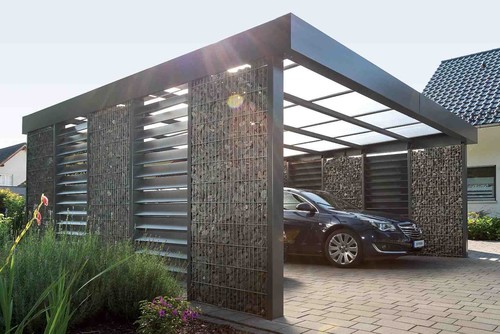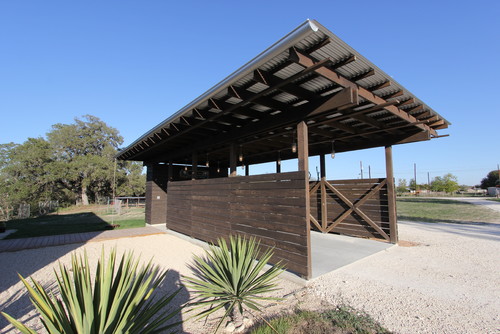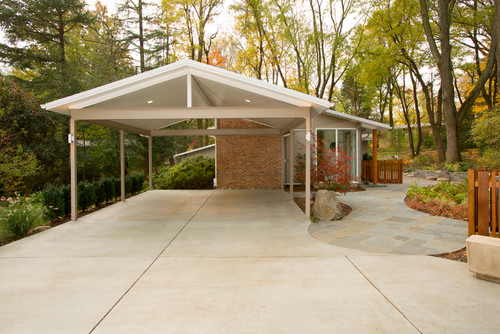What Are Housing Starts, and Why Should Home Buyers Care?
What Are Housing Starts, and Why Should Home Buyers Care?

What exactly are housing starts? This term, so often thrown around by housing policy wonks and quoted in dense financial reports, refers to the number of new homes on which builders have started construction in any particular month. The latest figures can be found in the U.S. Census Bureau’s monthly New Residential Construction Report (along with the number of building permits granted and residences completed), and are widely regarded as a key indicator of our nation’s economic health.
But if you’re not a financial adviser or high-end investor, why should you care, exactly? Because they directly affect regular home buyers. Here are some things you need to know about housing starts, including how they’re doing, what the data mean, and how this might affect your own efforts to buy a home.
What do housing starts really tell us, anyhow?
Housing starts reflect the strength of the U.S. economy since, simply put, new construction signals more jobs, higher salaries, and an abundance of loans to fund businesses and other endeavors.
For context: In 2005, when the economy was thriving, housing starts peaked at 2.068 million units. In 2009, during the depths of the Great Recession, housing starts bottomed out at 554,000 units. Since then, housing starts have crept upward every year to total 1.226 million units in 2016, more than double what they had been seven years earlier.
For 2017, “we’re relatively optimistic,” says Andres Carbacho-Burgos, a senior economist at Moody’s Analytics who studies the U.S. housing market. “By end of 2017, we expect housing starts to be closer to 1.7 million,” or a 10% increase over a year earlier.
Although housing starts data are released around the 17th of every month, experts warn against reading too much into month-to-month fluctuations, because housing starts are closely tied to … the weather. After all, building houses is far easier when Mother Nature cooperates.
As a result, housing starts follow a seasonal pattern, tending to rise in the spring, peak in the summer, ebb in the fall, and drop to their lowest levels during the winter. This is why analyses typically compare any particular month’s housing starts to the same month a year earlier, rather than to the month before.
What do housing starts mean for home buyers?
A rise in housing starts is good news for home buyers, particularly for the one-third who say they want to buy a brand-new home. For those folks, they’ll have more options to pick from, and odds are they’ll be at lower prices, too.
According to Carbacho-Burgos, “Housing starts, when they are completed, add supply [and in turn] reduce upward pressure on new-home prices and may even reduce them.”
People looking to buy existing (or previously lived-in) homes benefit from healthy housing starts, too, points out Danielle Hale, managing director of housing research at the National Association of Realtors®. The reason: A high number of houses, both new and old, drives down prices for all residences, not just the shiny new ones.
This should also be a welcome relief to many home buyers, because the supply of homes for sale is currently at a 20-year low nationwide, which has pushed home prices higher over the past few years. Now, finally, housing starts data suggest that home prices will level off, or even drop in some markets. At least, that’s the hope.
Why aren’t more homes being built?
Although housing starts are seeing modest growth, homebuilders are being held back by a variety of problems. Many blame lack of labor, a problem that originated in the late 2000s when massive numbers of construction workers were laid off in the wake of the housing bust. Since then, the demand for construction workers has bounced back, but many aren’t answering the call, having turned to other industries (like landscaping), according to the Wall Street Journal.
“There aren’t enough construction workers to keep up,” says Robert Dietz, chief economist at the National Association of Home Builders. In fact, a recent report by the NAHB found that there are approximately 200,000 unfilled construction jobs in the U.S., a jump of 81% over the previous two years.
Another problem holding back builders is permits. Bradley Gaskins, an official at the American Institute of Architects, recently told the Journal that the group’s members are seeing permit approvals take longer—for instance, stretching to six to eight months in hot markets such as Florida and California, compared with the typical two to three months.
In some locations, the permit problem is much worse. According to Jesse Fowler, president of Southern California–based construction firm Tellus Design + Build, “We’re working on one new construction in Hollywood Hills that’s been pending a permit for two and a half years. And, shockingly, that’s not uncommon.”
Builders are also grappling with the rising cost of materials. Currently, the U.S. government is considering a 20% tariff on Canadian lumber imports, and since Canadian imports represent about 28% of all softwood lumber purchased in the U.S., the NAHB warns the tariff could increase the price of an average single-family home by $1,236. In fact, just the anticipation of the tariff has pushed up lumber prices by about 22% since the start of this year.
The upshot? “If you’re buying new construction, you may need to pay more money than you would have a few years ago,” says Dietz.
How to start your home-buying search
However, keep in mind that “housing starts describe the state of the home construction market in broad strokes,” says Hale. In other words, not all areas and markets will feel the same effects.
“Housing starts could be concentrated mainly on high-end homes, which would mean that only the upper tier of the housing market would be affected,” Carbacho-Burgos explains.
Geography also plays a role. According to Carbacho-Burgos, housing starts are particularly strong in large metro areas in the South (think Charlotte, NC; Nashville, TN; or Austin, TX), meaning that home buyers who want a wide selection of new homes or low prices may want to consider moving to those areas.
“At the end of the day, all real estate is local,” says Dietz. So be sure to research your particular area using online tools like realtor.com/local, where you can find out the average home sales price and other info that will help guide your search.































